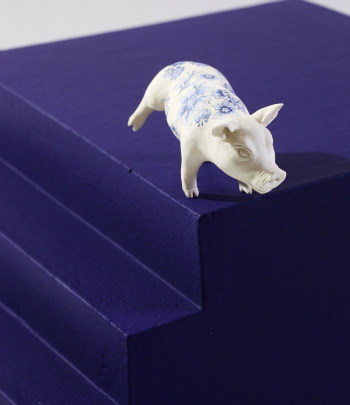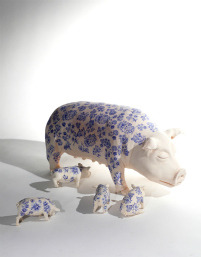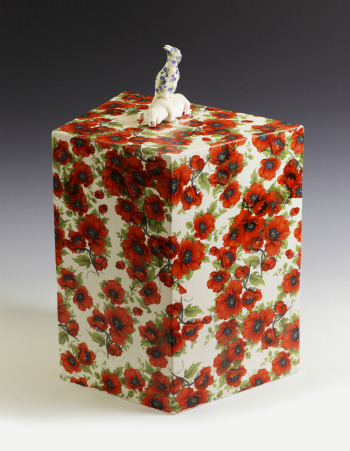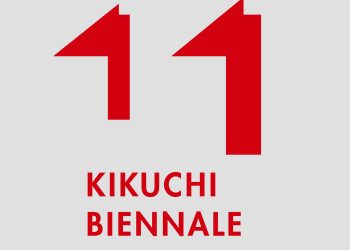
In what techniques do you usually work and what materials do you use?
I usually use two different techniques for my artworks. One is slab-building for the architecture, the other is plaster casting for the swine. I use stoneware for the architecture, firing at cone 04 while porcelain clay for the swine, firing at cone 6.
What is your present project, what’s its history and how do you make the pieces?
I have been interested in expressing my personal emotion derived from my own trauma through swine’s body language. Most of all, depression, anxiety, desire, obsession from my daily lives, and subtle emotions indescribable through language have been important sources of my inspiration. My recent works ‘Secret Garden’ represent my personal story hidden in the flowers. The universal meanings of flowers were subverted with my personal narrative in my artworks. But viewers are given a clue through the text to decode my secret story with the flowers.
Do you remember your early works, how did it all started?
When I look back on my early works, I seem to be interested in expressing my ‘contradictory desire’ and ‘phenomenological things’ such as the absence and presence of a thing. I usually loved using big words that I couldn’t fully understand. But that kind of questions are very helpful to my recent works.

Can you tell us more about the contemporary ceramic art scene in South Korea? Tell us how it’s like to be a ceramic artist in South Korea – if you sell your pieces quickly, if you get funding from the government or if you have many opportunities/ spaces to exhibit.
Korea is blessed with a stunning oeuvre of ceramic accomplishment that provides a deep heritage that remains attuned to contemporary sensibilities. This rich reservoir of ceramic grammar has great emotive range, from the gray restraint of Unified Silla (688-935 AD) to the elegance and softness of Koryo (935-1392) inlaid celadon.
Contemporary artists working with clay in Korea have transformed the old traditions into a modern style which neither blindly replicates the past nor ignores the wealth of forms and decorative techniques which make Korean ceramics so different from the neighboring traditions of China and Japan.
Of course to be an artist (ceramic sculptors) means it is hard to make a living if he/she are not potters. But the art markets in Korea are very interested in ceramic artists. Recently I sold more than six pieces (20,000$) through art galleries. The Korean Government also has been making every effort to support artists. I got a huge grant (5,000$) from the government last year. But still the artists’ life is not easy, that’s why most artists want to be full-time professors. This is the reality.
Where can we find you and your works in the next future?
I have several group exhibitions in the future. In particular, my works will be shown in ‘Asia Top Gallery Hotel Art Fair’ at Grand Hyatt in Seoul of Korea. And my solo show will be held at Santiago Online Gallery. My works are well-known in the ceramic world, but I hope that my works will be known more in the fine arts field through these shows.
Give a piece of advice for the young ceramic artists.
Knowing yourself first will lead to your goal.
Warokkiooo, 2010, 36 x 24 x 43, fired clay, glaze, decal – View his works
Born in South Korea, ceramicist Bang Chang-Hyun studied ceramics and English language and literature at Kyung Hee University in Seoul and continued his studies (a master’s in ceramics) at the State University of New York, New Paltz. Bang was a literature student devoted to practicing novels in his mid-20s, dreaming of becoming a novelist. His career later helped him form his own distinctive visual grammar in his creative activities as a potter. Based on literary imagination, metaphor, and symbol, Bang leads viewers to empathy with his personified swine characters.
By Vasi Hirdo.
Published in Ceramics Now Magazine Issue 1.
Visit the artist’s website.
View Chang Hyun Bang’s profile on Ceramics Now.




















